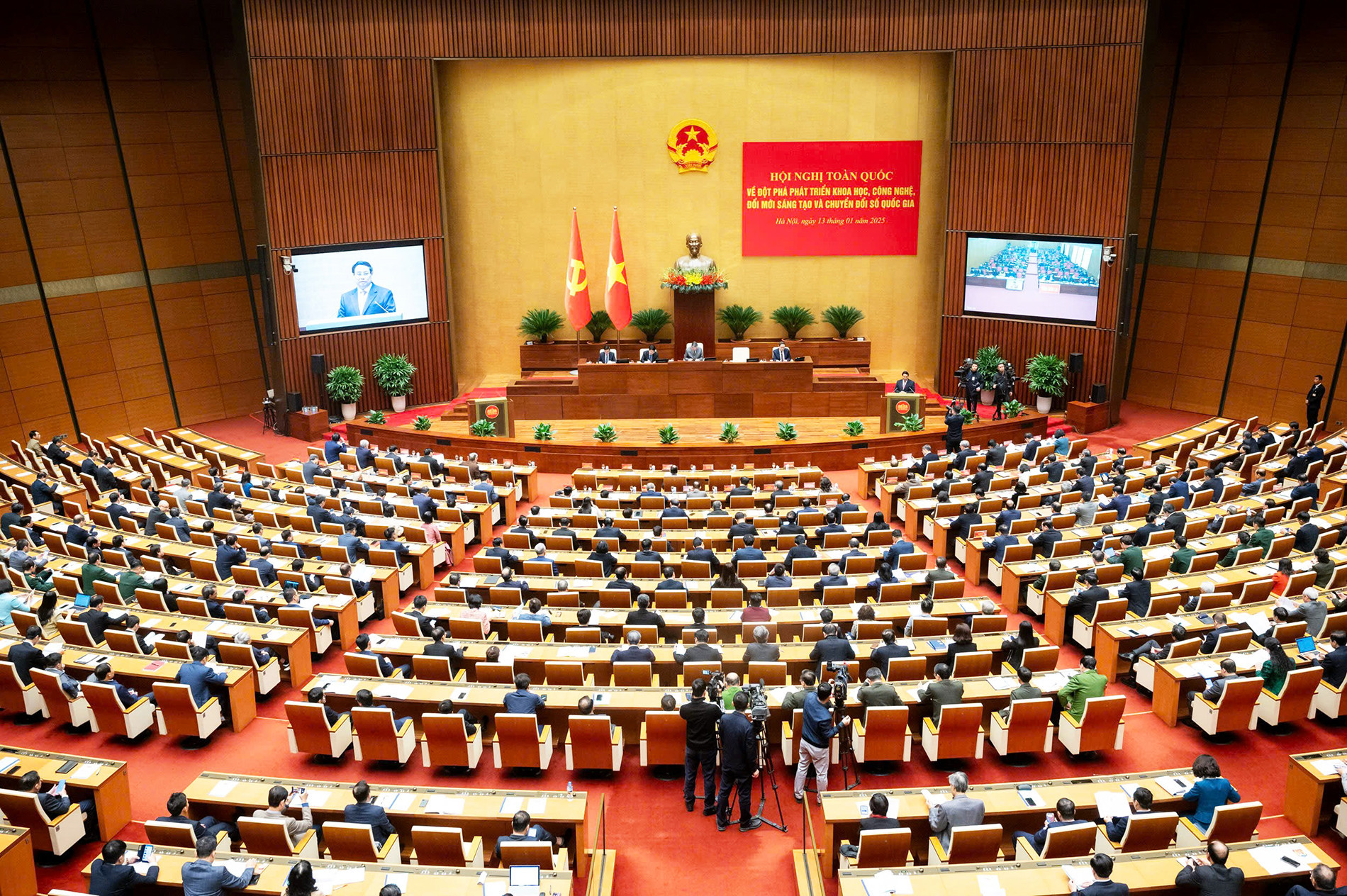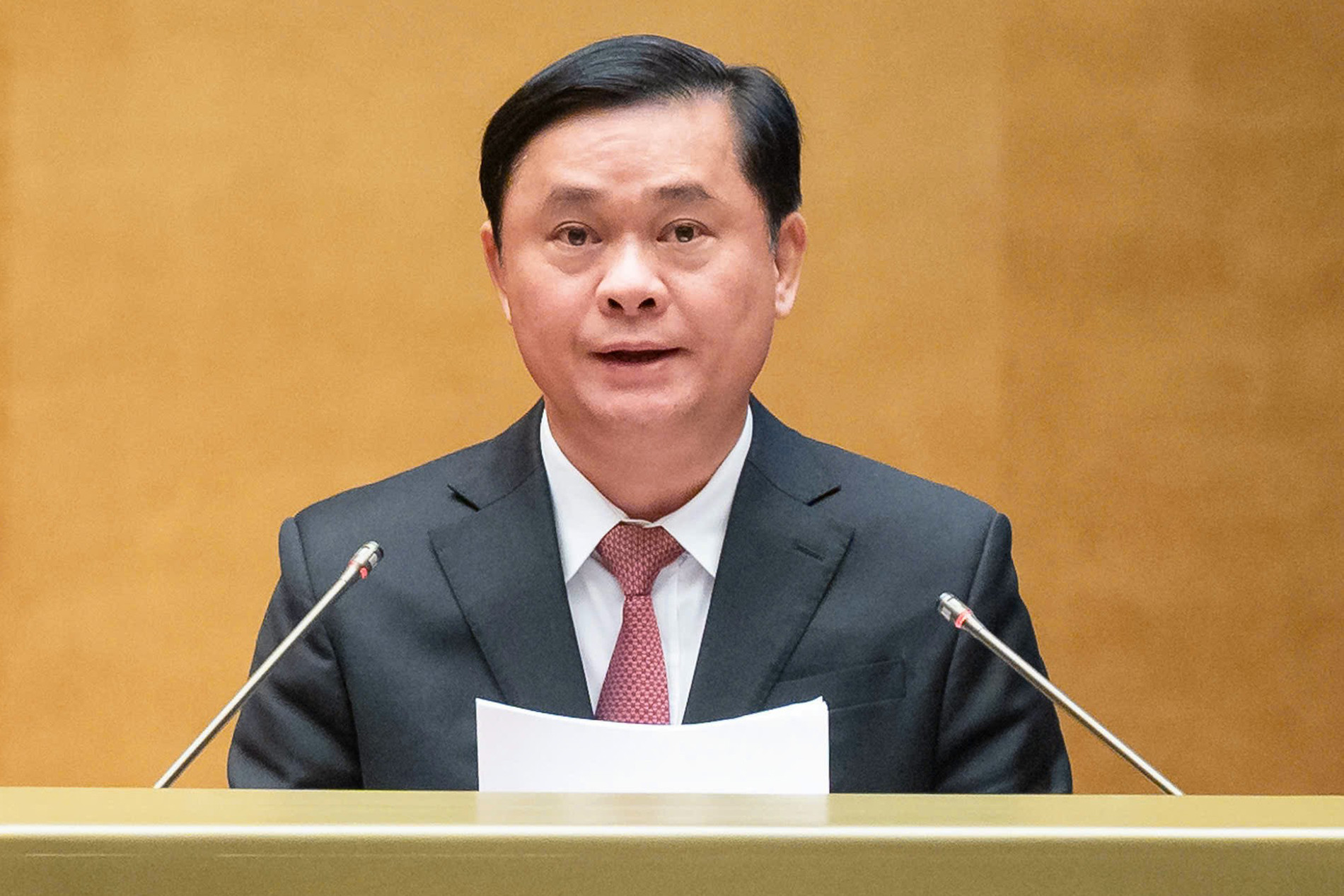Resolution No. 57 highlights the pivotal role of science, technology, innovation, and digital transformation, identifying these areas as critical breakthroughs to drive Vietnam’s rapid development and prosperity.
Leaping forward with science, technology, and digital transformation
At the national conference on breakthroughs in science, technology, innovation, and digital transformation held earlier today, Deputy Head of the Central Economic Commission, Thai Thanh Quy, presented a summary of the achievements and challenges in implementing Party and State policies on these fronts.

According to data, Vietnam has 423 research and development organizations of varying sizes, mainly located in Hanoi and Ho Chi Minh City.
There are nearly 900 certified science and technology enterprises in Vietnam, along with approximately 4,000 innovative startups, 208 investment funds, 84 incubators, and 20 innovation centers.
Vietnam’s startup ecosystem ranks 56th out of 100 countries globally, while Hanoi and Ho Chi Minh City are among the top 200 global cities for innovation.
In 2024, Vietnam ranked 44th out of 133 countries on the Global Innovation Index and 71st out of 193 countries on the E-Government Development Index. The digital economy accounted for an estimated 18.3% of GDP by the end of the year, while the digital technology industry achieved $152 billion in revenue, with hardware and electronics exports reaching $132 billion.
However, Quy candidly acknowledged significant gaps compared to developed nations. Vietnam has yet to achieve major breakthroughs in research and application or master critical strategic and digital technologies.
Infrastructure remains inconsistent, with significant shortcomings in digital infrastructure. Data protection, cybersecurity, and resource mobilization for R&D remain challenging.
In 2023, public spending on science, technology, innovation, and digital transformation was only 0.82% of total state budget expenditures, far below the mandated minimum of 2%. R&D investment was just 0.67% of GDP, compared to the 2–5% average in developed countries.
Challenges also include outdated science, technology, innovation management mechanisms, particularly in finance and investment, and bureaucratic practices that hinder creativity and talent attraction. Furthermore, the science, technology, innovation, and digital transformation market is developing slowly, and coordination between ministries, sectors, and localities is insufficient.
The key driver of national development

Emphasizing the spirit of Resolution No. 57, Thai Thanh Quy noted that the resolution establishes five guiding principles, five objectives for 2030, and a vision for 2045. It outlines seven key tasks and solutions for achieving these goals.
The resolution underscores the essential role of science, technology, innovation, and digital transformation as the primary drivers for modernizing production forces, transforming governance methods, and preventing stagnation. These efforts are intended to propel Vietnam into an era of prosperity and strength.
Quy described this movement as a comprehensive and inclusive revolution requiring firm, coordinated, and persistent implementation. Citizens and businesses are central actors and resources in this effort, with scientists as key contributors and the State providing strategic leadership.
Core elements of this revolution include institutions, human resources, infrastructure, data, and strategic technologies. The resolution prioritizes institutional reforms, promoting creativity by moving away from restrictive mindsets such as “prohibit what cannot be controlled.”
It also emphasizes developing highly skilled human resources and establishing special mechanisms for talent management. Digital infrastructure must be modern, secure, and efficient to unlock the full potential of data as a key production resource. Investments in big data, data industries, and the data economy are seen as critical growth drivers.
The resolution outlines the importance of fostering a new mindset, mobilizing political determination, and creating momentum for societal transformation. Among its key directives is the urgent need to remove institutional barriers and establish competitive advantages for science, technology, innovation, and digital transformation.
It also calls for greater investments in infrastructure, prioritization of high-quality human resources, and mechanisms to attract and retain top talent.
Trong Dat